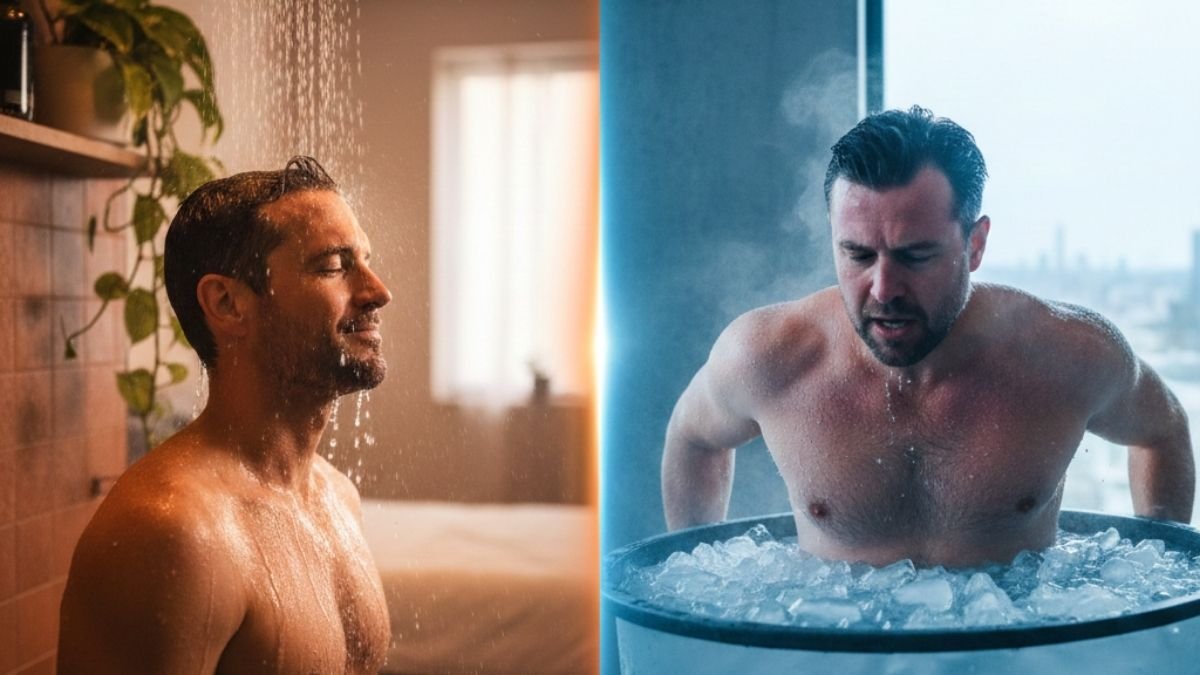
Look, we’ve all been there. It’s 11:30 PM. You’re exhausted, but your brain is doing laps. You’re scrolling through your phone (which you know you shouldn’t be doing), and you see one influencer swearing by a cozy, warm bath, and the next one is submerged in an ice barrel, screaming about resilience.
It’s confusing. Is the goal to be cozy? Or is the goal to “shock” your system into submission?
Here’s the truth: sleep isn’t just about being tired. It’s a biological sequence, almost like a launch code. And temperature is the key that turns that code.
But most people are turning the key the wrong way.
I dug into the heavy-hitting research—biomedical engineering meta-analyses, neurobiology papers, and protocols from experts like Dr. Andrew Huberman and Dr. Matthew Walker—to find out what actually happens to your body when you hit the water.
Here is the definitive, science-backed answer to the hot vs. cold debate.
The “Aha!” Moment: It’s Not About Warming Up
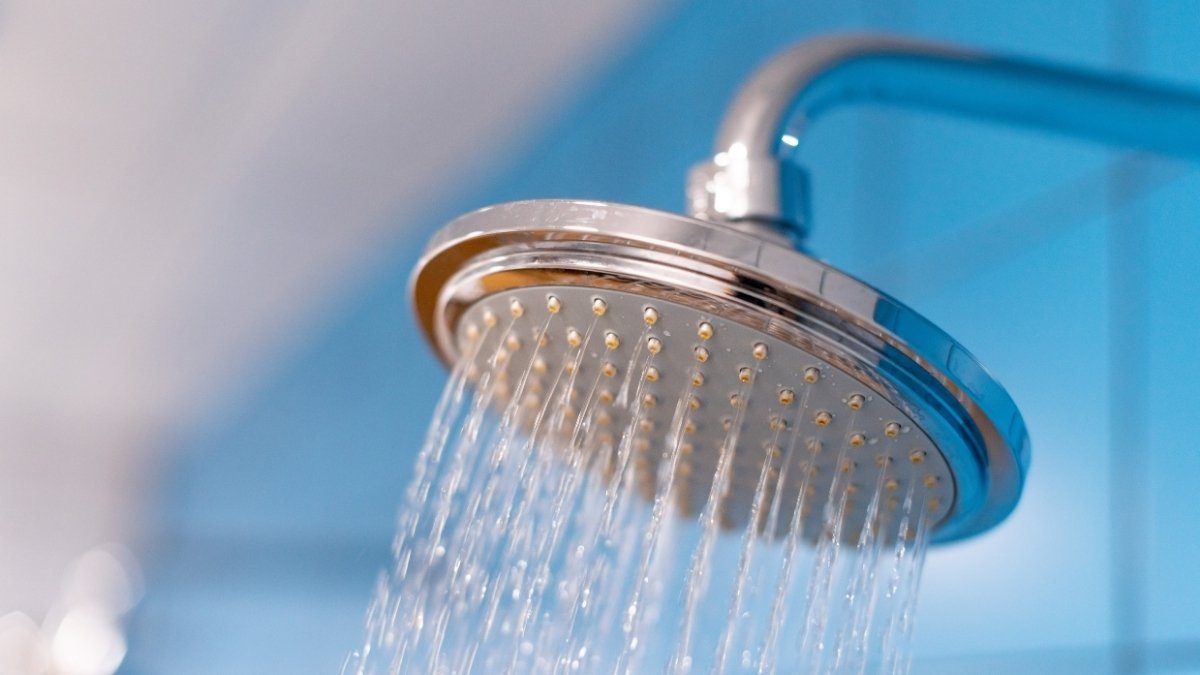
Before we pick a winner, you have to understand one weird biological paradox.
To fall asleep, your body doesn’t want to be warm. It needs to cool down.
Specifically, your core body temperature needs to drop by about 1°C (2–3°F) to initiate the “sleep cascade.” This drop tells your brain, “The sun is down, the day is safe, release the melatonin.” If your core stays hot, your brain stays awake. It’s that simple.
So, why on earth would we get into a hot bath to cool down?
The “Warm Bath Effect” (The Radiator Trick)
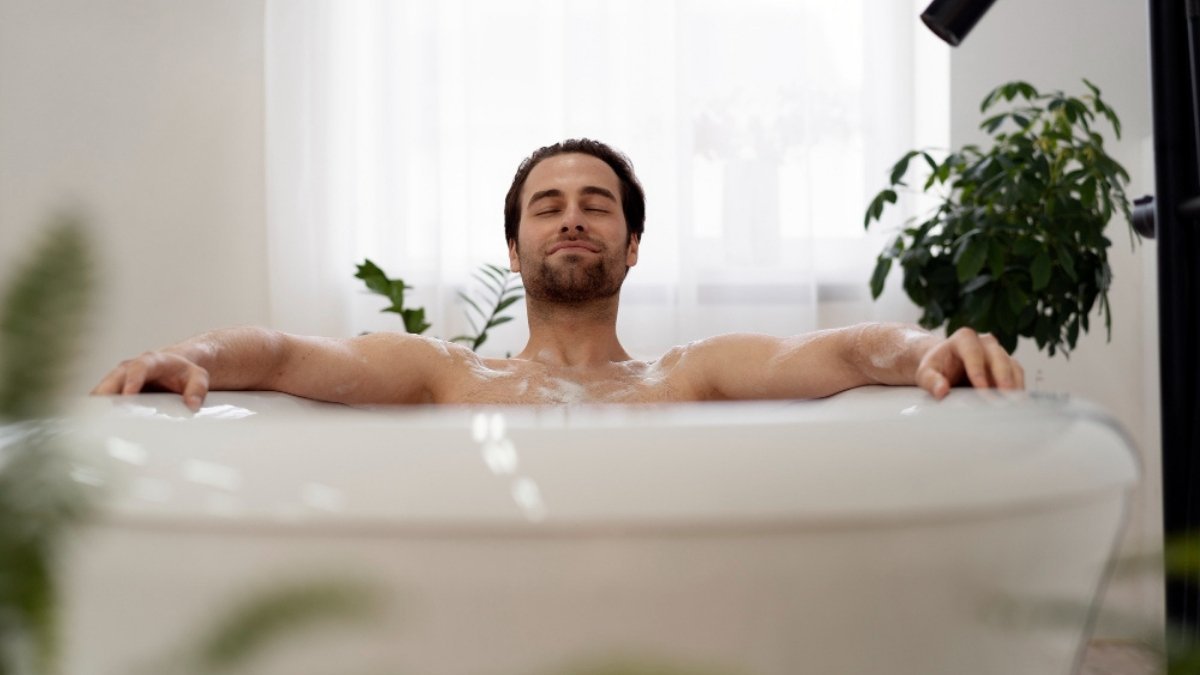
This is where the magic happens. It’s called Passive Body Heating (PBH), but let’s just call it the “Warm Bath Effect.”
When you step into warm water, your body panics—just a little bit. It thinks, “I’m getting too hot!” To fix this, it pumps blood away from your core and out to your skin, specifically to your hands and feet. This is a process called distal vasodilation.
Think of your hands and feet as your body’s radiators. By opening the valves (your blood vessels) in your extremities, you are priming the system to dump heat.
The moment you step out of that warm water and into your cool bedroom, all that heat radiating from your skin escapes instantly. Your core temperature plummets. That rapid crash in temperature is the precise biological signal that knocks you out.
The Data: Does it Actually Work?

It’s not just a feeling; the numbers are wild. A massive systematic review by biomedical engineers at UT Austin (led by Shahab Haghayegh) looked at over 5,000 studies.
Here is what they found about the “Warm Bath Effect”:
- The Sweet Spot: 104–109°F (40–42.5°C).
- The Timing: 90 minutes before bed.
- The Result: It reduced the time it took to fall asleep (Sleep Onset Latency) by an average of 10 minutes.
Ten minutes might not sound like much, but in the world of sleep medicine, that is huge. It’s roughly the same efficacy as some prescription sleep aids, but without the grogginess the next day.
The Case Against the “Cold Rinse” at Night

Now, let’s talk about the Cold Rinse. I know, I know—Wim Hof does it. It makes you feel like a warrior. And honestly, I love cold exposure—in the morning.
But using it to sleep? That’s where things get messy.
The Norepinephrine Spike
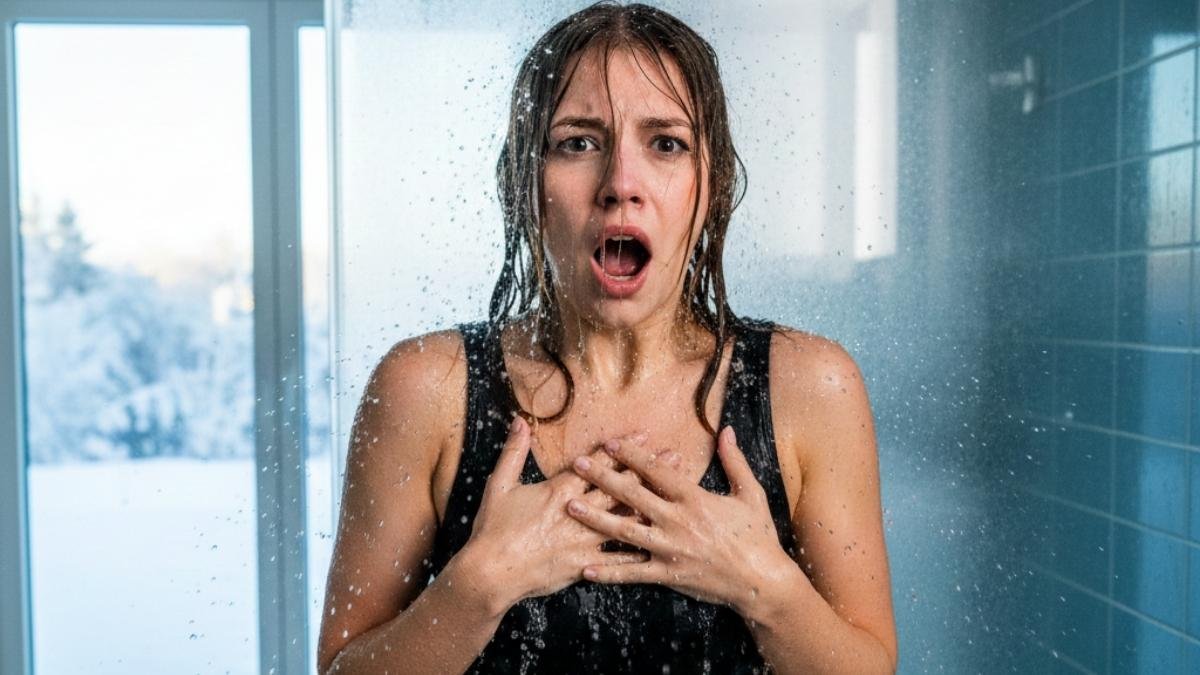
When you hit your body with cold water (anything below 60°F/15°C), you trigger a survival mechanism called the “Cold Shock Response.”
Your brain releases a cocktail of neurochemicals, primarily norepinephrine (noradrenaline) and dopamine. Studies show norepinephrine levels can spike by up to 530%.
Norepinephrine is vigilance. It’s focus. It’s the chemical that tells you to go, move, hunt, and survive. It is the biological opposite of sleep.
Dr. Andrew Huberman, a neurobiologist who is a huge proponent of cold exposure, explicitly warns against doing this at night. He calls the cold signals an “artificial sunrise.” You are effectively telling your body’s clock that the day has just begun.
The “Trap” of Feeling Cool
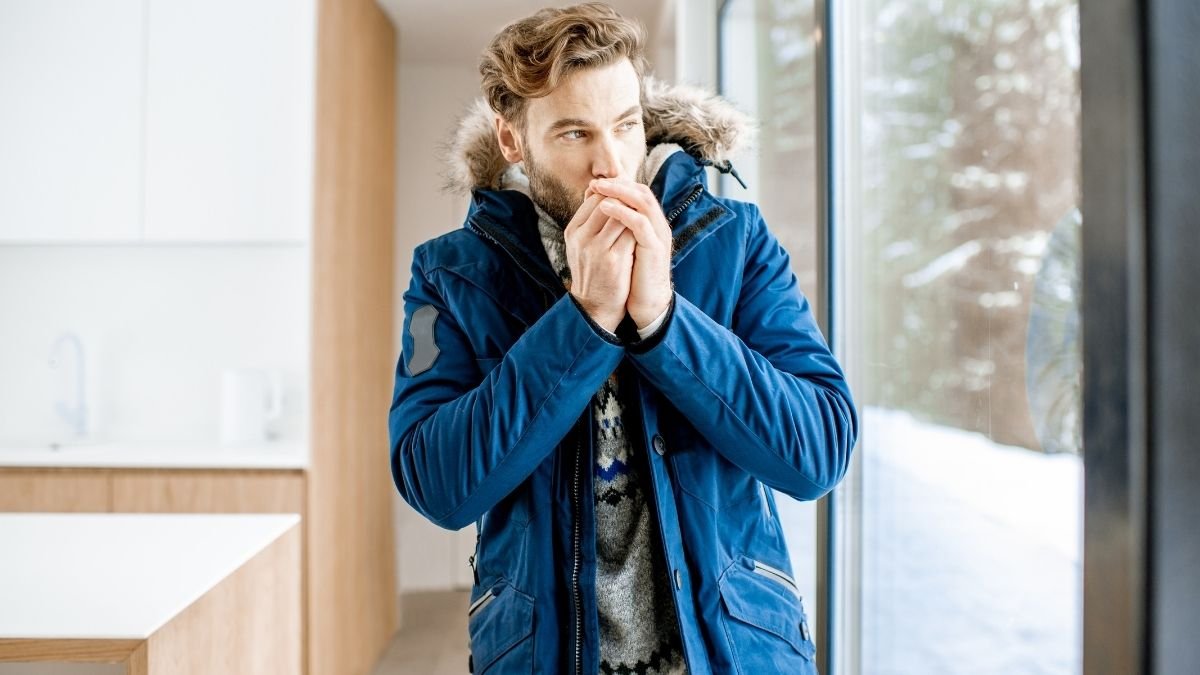
“But,” you might say, “I feel cold after a cold shower. Doesn’t that help the temperature drop?”
Counterintuitively, no.
When you get into cold water, your body does the opposite of vasodilation. It causes vasoconstriction. It clamps down on the blood vessels in your hands and feet to protect your organs.
This traps the heat inside your core. So while your skin feels freezing, your internal thermostat is actually staying high (or even rising as your metabolism revs up to fight the cold). You are effectively closing the vents right when you need to open them.
The “Parasympathetic Rebound” Myth
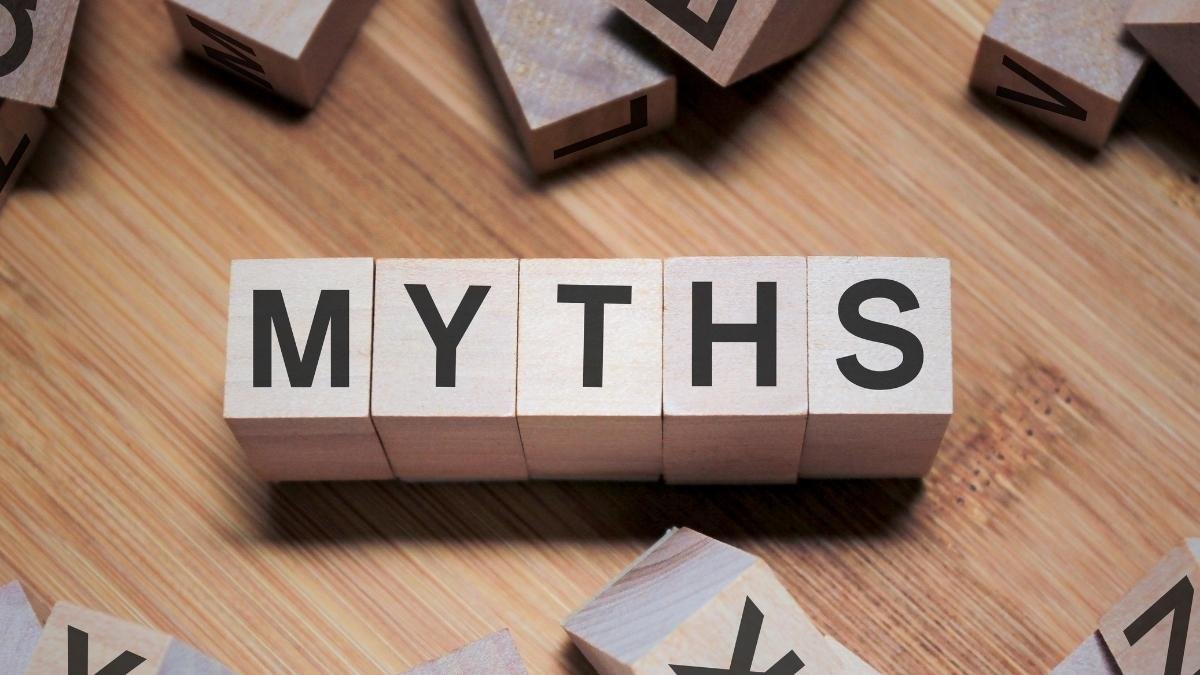
There is a theory floating around Reddit called the “Parasympathetic Rebound.” The idea is that if you shock yourself with cold, your body will eventually overcompensate and relax you later.
Is it real? Yes. After the stress, your heart rate does come down.
Can you time it perfectly for sleep? It’s a gamble.
You have to survive the adrenaline spike first. If you miss the window, you’re lying in bed with a heart rate of 90 bpm, staring at the clock. It’s an unreliable sedative compared to the mechanical certainty of the warm bath heat dump.
The Cheat Sheet: What Happens to Your Body
I put this together so you can see the difference at a glance. It’s pretty stark.
🌡️ Hot vs. Cold: Temperature Therapy Showdown 🧊
“But Wait, I Have Anxiety…” (The Only Exception)
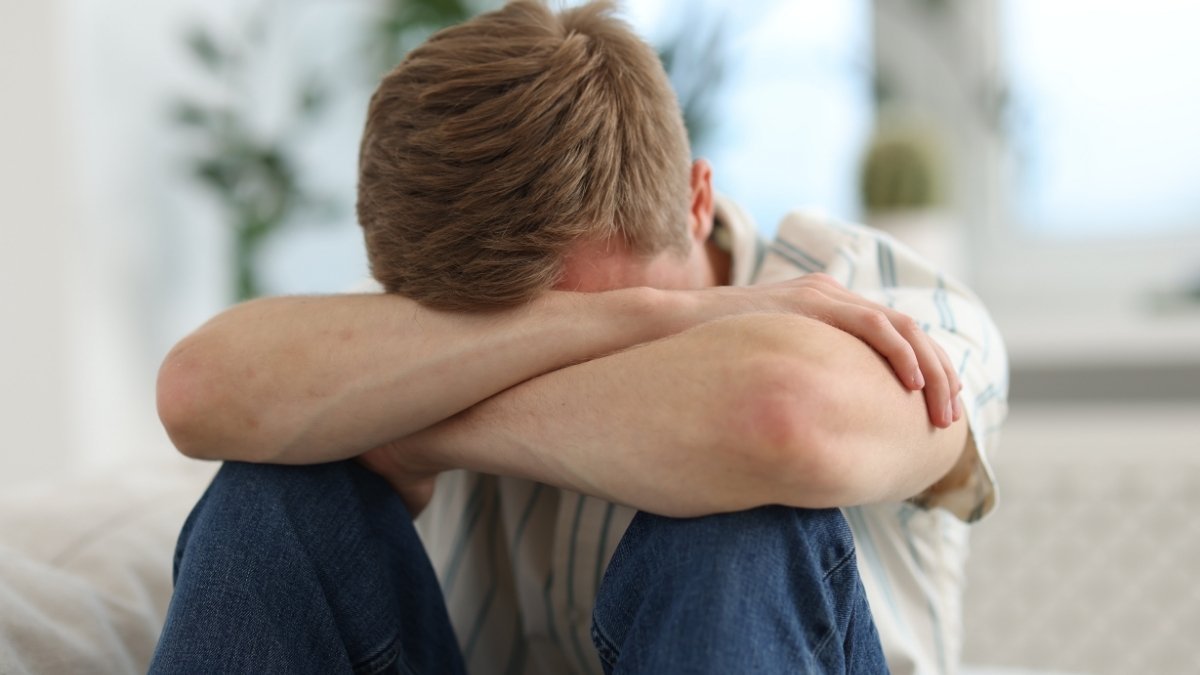
There is one specific scenario where I might tell you to use cold water at night.
If you aren’t sleeping because your mind is racing—if you are having a panic attack or high anxiety—temperature can be a “pattern interrupt.”
You don’t need a full cold shower, though. You just need to trigger the Mammalian Dive Reflex.
The Protocol:
Splash ice-cold water on your face (just your face) or hold a cold pack to your forehead/chest for 30 seconds.
Why? It stimulates the vagus nerve and slows your heart rate (bradycardia) without the massive full-body adrenaline dump of a shower. It quiets the noise in your head so you can try the warm bath strategy again.
What About Contrast Showers? (Hot-Cold-Hot)
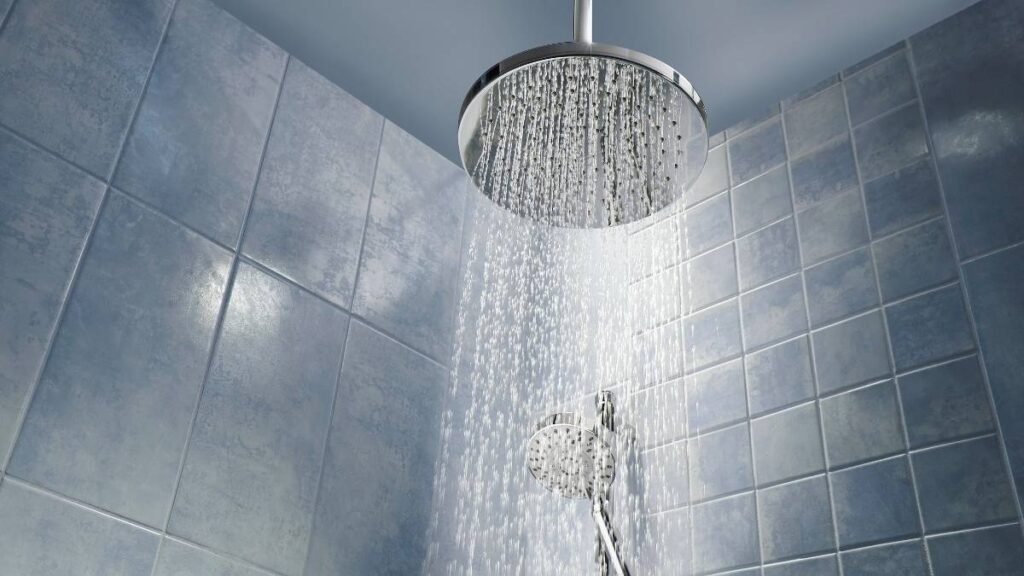
I see this question a lot. “What if I alternate?”
Contrast therapy (Hot-Cold-Hot-Cold) is amazing for recovery and immunity. One study found it reduced sick days by 29%. But for sleep? You have to stick the landing.
If you end on Cold: You wake up (pores close, adrenaline spikes). If you end on Warm: You sleep (pores open, heat dumps).
If you love the feeling of contrast, go for it, but for the love of sleep, always finish with 2–3 minutes of warm water.
Upgrade Your Routine: Useful Tools That Actually Help
Honestly, you don’t need fancy gear to sleep—hot water is usually enough. But if you want to turn that 90-minute pre-bed window from a chore into a proper ritual, I’ve found a few things that align perfectly with the science we just talked about. These help you time the cold, relax the muscles, and ensure that core temperature drops exactly when it should.
Here are five favorites that are actually worth the shelf space:
1. BALDR Waterproof Shower Clock & Timer

If you are doing the morning cold rinse, you need a timer. Thirty seconds feels like an hour when you’re freezing, and it’s easy to cheat. This waterproof timer sticks right to the wall so you can hit the exact dosage for that norepinephrine spike without guessing.
2. Body Restore Shower Steamers (Lavender)

Not everyone has a bathtub, and that’s fine. These steamers dissolve in your shower steam and release lavender essential oils. It’s a simple way to trick your brain into “spa mode,” helping to lower cortisol before you even step out of the water.
3. Ancient Minerals Magnesium Oil Spray

We talked about “tech neck” keeping you awake. Magnesium is a natural muscle relaxant, and this spray absorbs directly through the skin. I like to spray it on my shoulders right after the warm shower—it stings a little (that means it’s working), but it melts the tension away.
4. SparkPod High-Pressure Rain Shower Head

To get the full “Warm Bath Effect” in a shower, you need coverage. A low-flow trickle won’t heat your body enough to trigger vasodilation. This head is a best-seller because it feels like a luxury hotel shower, ensuring you get that necessary thermal load.
5. NY Threads Fleece Bathrobe
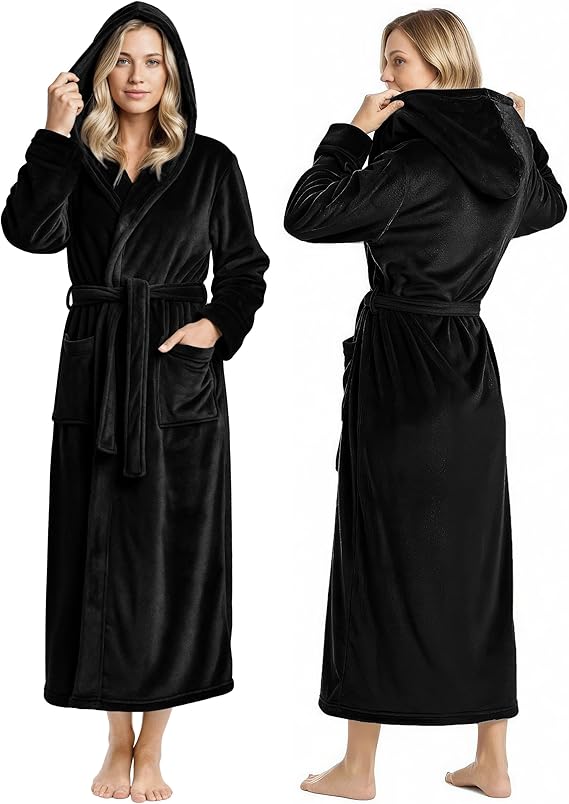
This is the most critical step for the “Distal Dump” protocol. When you step out of the warm water, you need to dry off immediately to prevent shivering (which wakes you up). A plush robe keeps your skin warm just long enough for you to get into bed, facilitating that rapid core temp drop.
Your New Nighttime Protocol
Based on everything we know, here is the strategy that actually works. Forget the trends; this is biology.
The “Distal Dump” Protocol (For Deep Sleep)
- Timing: Start this 60–90 minutes before you want to be asleep.
- The Water: Warm to Hot (104–109°F). Not scalding—you shouldn’t be sweating buckets.
- The Method: Bath is best (full immersion), but a shower works if you let the water run over your back and neck.
- The Hack: If you don’t want a full shower, do a Foot Bath. Just soaking your feet in hot water creates that “radiator” effect and pulls heat from your core. It’s surprisingly effective for older adults or people with circulation issues.
- The Exit: Dry off immediately. Wear light socks if your feet get cold (cold feet = vasoconstriction = awake). Keep your bedroom cool (around 65°F).
The “Morning Charger” (For Energy)
- Timing: Within 30 minutes of waking up.
- The Method: Warm shower to wash, then…
- The Finish: 30–60 seconds of the coldest water you can handle.
- The Result: That 530% norepinephrine spike clears your “sleep inertia” and sets you up for the day.
The Bottom Line
Don’t fight your biology.
The “Cold Rinse” is a tool for action, resilience, and waking up. It’s a double espresso for your nervous system.
The “Warm Bath,” on the other hand, is a biological lullaby. It works not because it makes you cozy, but because it mechanically forces your body to drop its temperature, opening the gate to deep, restorative rest.
So tonight? Skip the ice. Turn up the heat, soak for ten minutes, and let your body do the rest.





